Orange County, located in the southern region of California, is home to an impressive array of bird species. With its vast network of habitats, including coastal wetlands, sagebrush chaparral, oak woodlands, and riparian areas, Orange County offers an ideal environment for a diverse range of avian species.
From the majestic bald eagle to the tiny Anna’s hummingbird, the county’s bird list is an exciting and growing collection.
In this article, we will explore some of the most notable bird species found in Orange County and uncover fascinating facts about their behavior, habitat, and migration patterns. Join us as we embark on a journey through the birding world of Orange County.
1. Anna’s Hummingbird
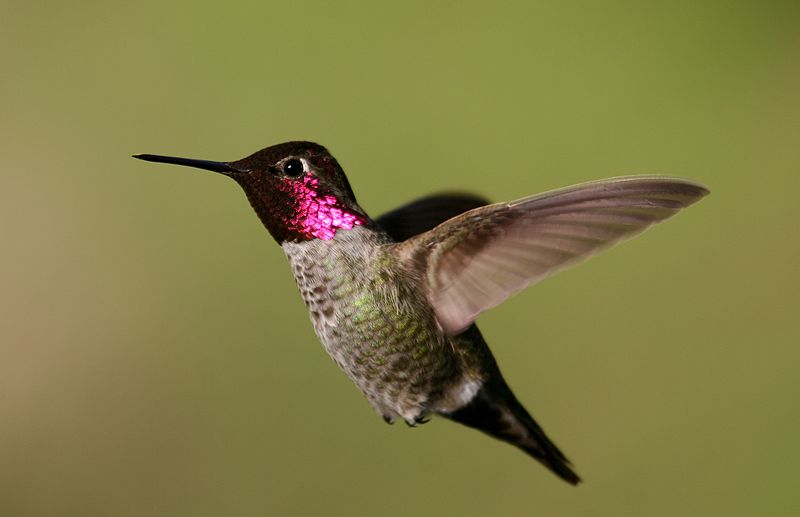
Anna’s hummingbird is a beautiful species of bird belonging to the Trochilidae family. Native to western coastal regions of North America, it was named after Anna Masséna, Duchess of Rivoli.
In the early 20th century, these birds bred only in northern Baja California and southern California but due to ornamental plant transplanting they can now be found across much of the Pacific Coast region.
They are medium-sized with bright emerald green feathers on their back and crowns as well as rose-red patches at the throat for males which makes them quite distinguishable from other birds.
Their diet consists mainly of nectar from flowers although they will occasionally feed on insects or spiders too making them important pollinators that help maintain healthy ecosystems.
Scientific classification:
| Kingdom | Animalia |
| Phylum | Chordata |
| Class | Aves |
| Order | Apodiformes |
| Family | Trochilidae |
| Genus | Calypte |
| Species | C. anna |
Also Featured In: Most Common United States Birds, Most Common Winter Birds
2. Allen’s Hummingbird
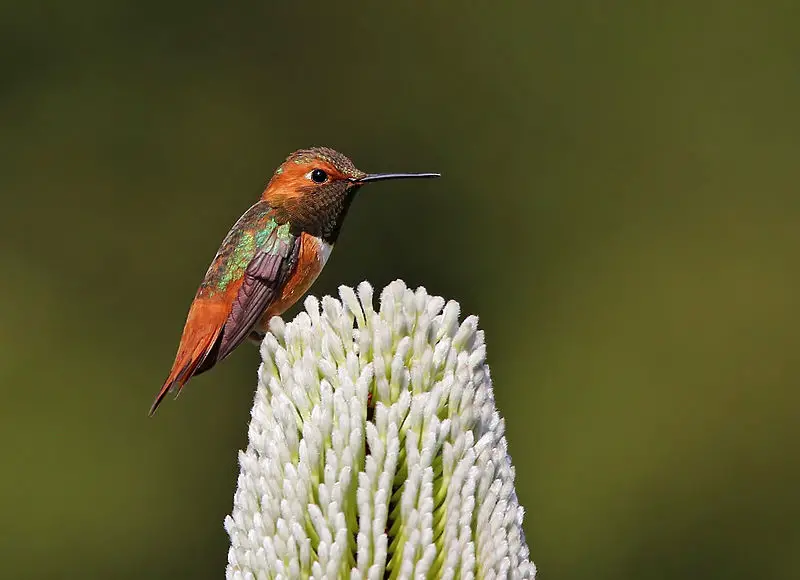
Allen’s Hummingbird is a beautiful species of hummingbird that breeds in the western United States. It stands only 3-3.5 inches long and its stunningly vibrant plumage makes it an incredible sight to behold.
The male has a green back and forehead, with rust-colored (rufous) flanks, rump, and tail while his throat dazzles with an iridescent orange coloration.
Females are similarly colored but lack the colorful throat patch of males.
These birds feed primarily on nectar from flowers such as sagebrush, California fuchsia, or currant bushes using their long bills and tongues to extract food from deep within them.
They also eat small insects for protein which they capture in flight like other hummingbirds do.
Allen’s Hummingbird can be found near chaparral shrubland during breeding season when wildflowers abound giving these tiny beauties plenty of sustenance.
Scientific classification:
| Kingdom | Animalia |
| Phylum | Chordata |
| Class | Aves |
| Order | Apodiformes |
| Family | Trochilidae |
| Genus | Selasphorus |
| Species | S. sasin |
Also Featured In: Common Southern Californian Birds, Birds that Live in San Francisco Bay Area
3. Acorn Woodpecker
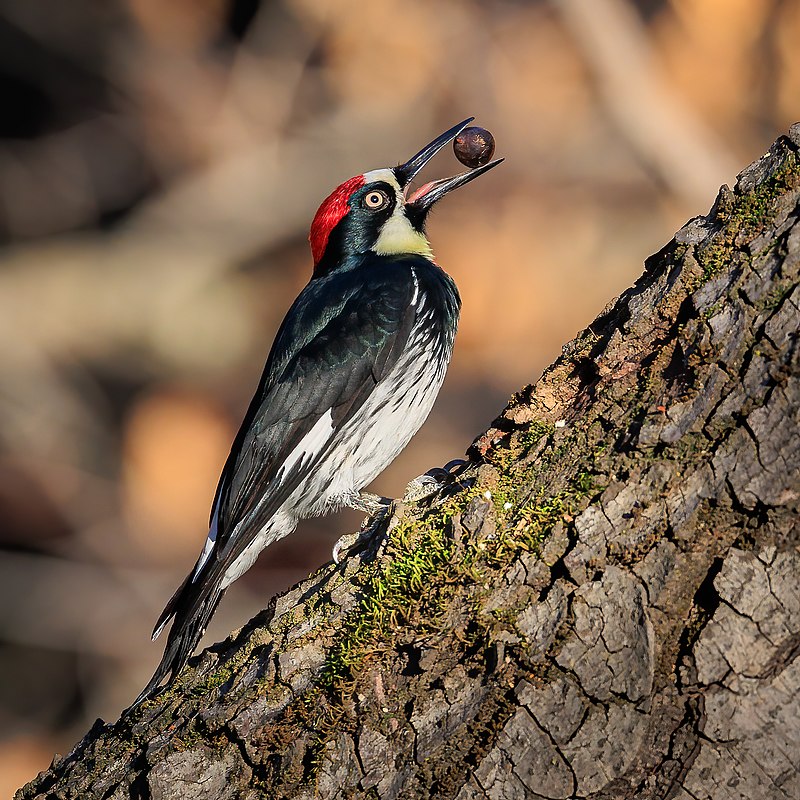
The Acorn woodpecker is a medium-sized bird with an average weight of 85 grams and 8.3 inches in length. It was first described by the English naturalist William John Swainson from a specimen collected in Mexico, back in 1827.
Its scientific name, Melanerpes formicivorus, combines Latin words meaning “ant” and “-vorous”.
This species has distinct black plumage all over its body except for some white patches on its wings and tail feathers which can be seen when flying or perched atop trees.
They are known to store acorns inside tree crevices as well as within bark cracks – often using them during lean times.
The acorn woodpecker is also socially active; they live together with other birds of their kind in groups called ‘granaries’. Their chirps are loud enough that they can easily be heard from afar.
Scientific classification:
| Kingdom | Animalia |
| Phylum | Chordata |
| Class | Aves |
| Order | Piciformes |
| Family | Picidae |
| Genus | Melanerpes |
| Species | M. formicivorus |
Also Featured In: Birds that Live in the Grand Canyon National Park, Birds that Live in Yosemite National Park
4. Black-chinned Hummingbird
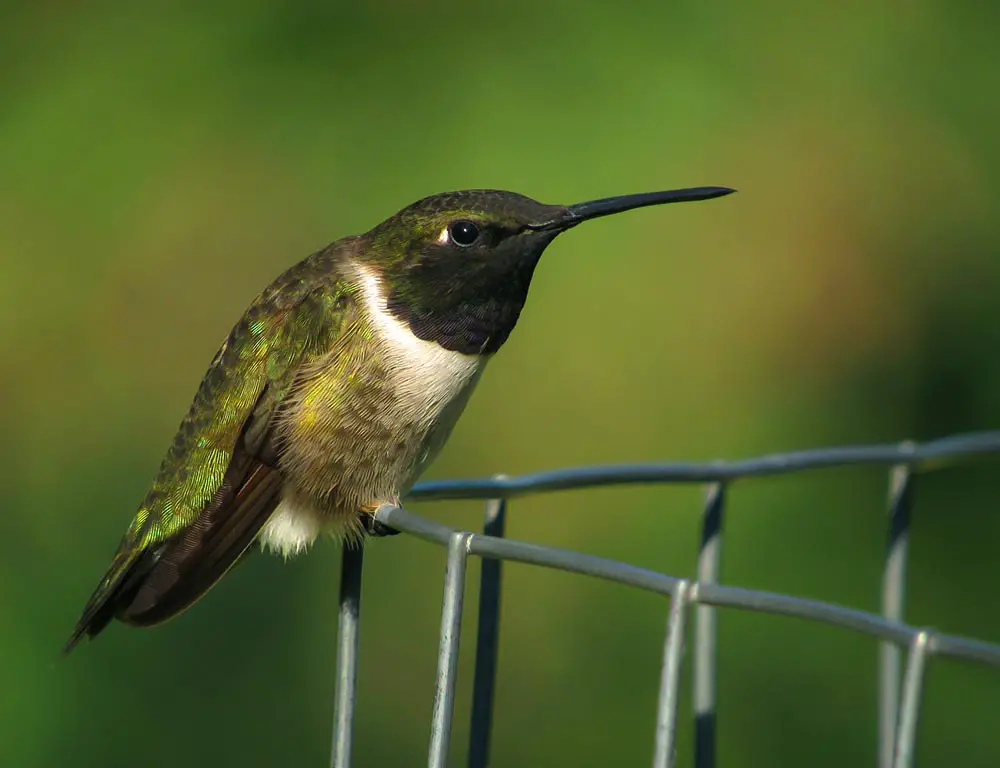
The Black-chinned Hummingbird (Archilochus alexandri) is a small but widely distributed bird. It migrates to Mexico for the winter months, and in summer can be found across much of North America.
The Black-chinned Hummingbird has been known to hybridize with several other species such as Anna’s, Lucifer, Broad-tailed, and Costa’s hummingbirds.
It prefers open habitats like desert scrub or grasslands that provide plenty of nectar from flowers.
These birds are also capable flyers, able to reach speeds of up to 34 miles per hour. With its dazzling plumage and impressive flying skills the Black-chinned Hummingbird makes an intriguing sight for any nature enthusiast lucky enough to spot one in the wild.
Scientific classification:
| Kingdom | Animalia |
| Phylum | Chordata |
| Class | Aves |
| Order | Apodiformes |
| Family | Trochilidae |
| Genus | Archilochus |
| Species | A. alexandri |
Also Featured In: Most Popular Bird Species in North America, Central Texas Birds
5. Pied-Billed Grebe
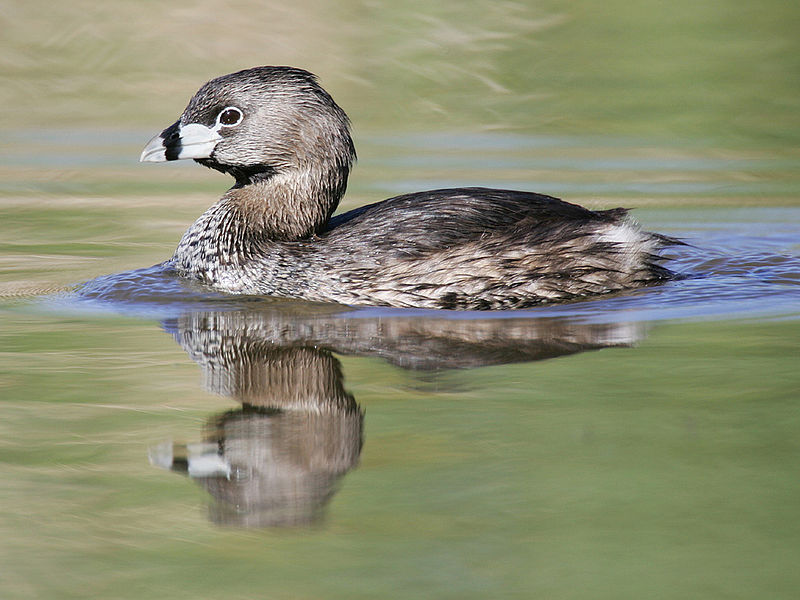
The Pied-billed Grebe is a water bird found in ponds throughout the Americas. It has earned many nicknames, including American dabchick, rail, and Carolina grebe.
This species of grebe can be recognized by its distinctive bill which is pied or mottled with black and white markings.
Its brownish body is also covered in dark spots and well as long legs for swimming underwater to catch food such as aquatic insects and crustaceans.
The Pied-billed Grebes are monogamous birds that pair up during breeding season from spring to summer where they build their nests together on vegetation near the shoreline of lakes or slow-moving rivers.
These birds are solitary outside of mating season but will form small flocks when migrating south for winter months.
Scientific classification:
| Kingdom | Animalia |
| Phylum | Chordata |
| Class | Aves |
| Order | Podicipediformes |
| Family | Podicipedidae |
| Genus | Podilymbus |
| Species | P. podiceps |
Also Featured In: Top Birds Found in Mexico, Water Birds Live around Us
6. Pin-Tailed Whydah
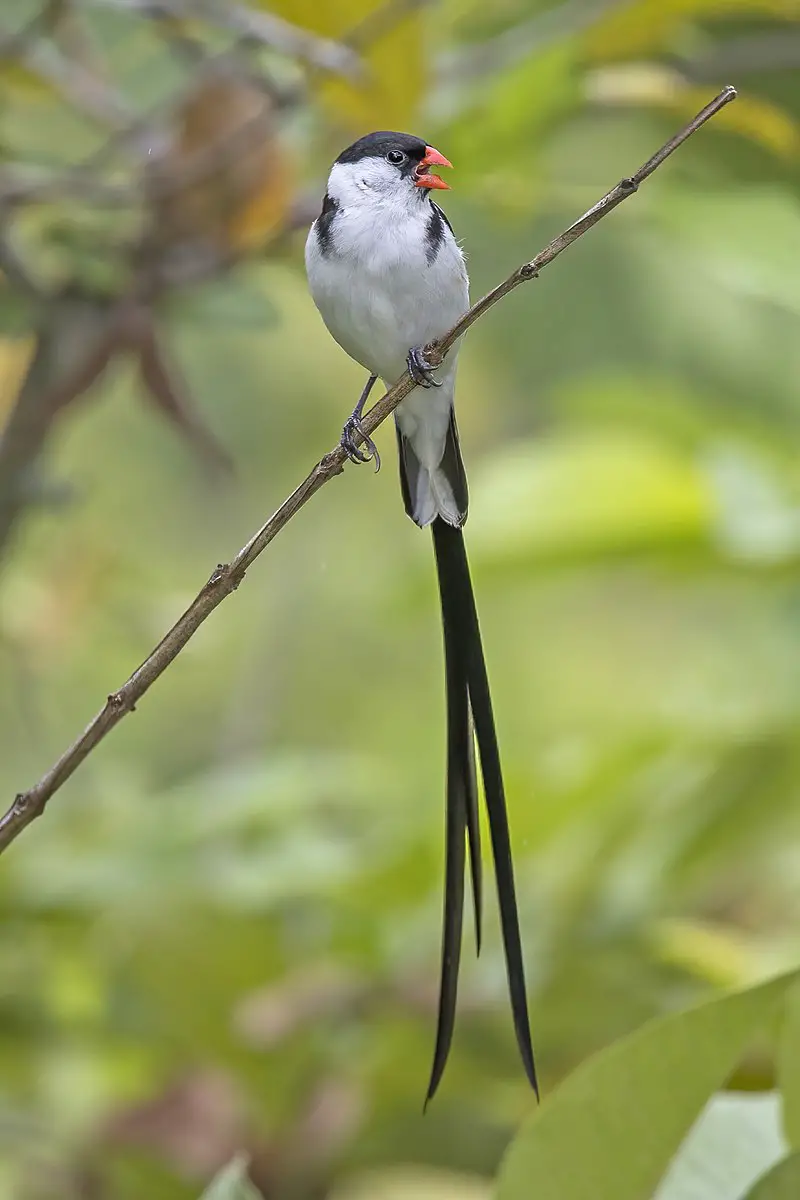
The Pin-tailed Whydah (Vidua macroura) is a small yet eye-catching songbird native to Africa, south of the Sahara Desert.
With breeding males sporting an impressive pennant-like tail, it measures 12–13 cm long and can be identified by its black plumage with white spots on wings and flanks.
It was first described by German naturalist Peter Simon Pallas back in 1764. The bird typically inhabits open savanna habitats where they feed mainly on grass seeds supplemented with insects during the rainy season.
During courtship displays, male birds will spread their tails while singing loudly from a perch or hovering over females before mating takes place – making this one of nature’s most captivating spectacles.
Scientific classification:
| Kingdom | Animalia |
| Phylum | Chordata |
| Class | Aves |
| Order | Passeriformes |
| Family | Viduidae |
| Genus | Vidua |
| Species | V. macroura |
Also Featured In: Birds of Senegal, Birds that You’ll Find in Puerto Rico
7. Black Phoebe
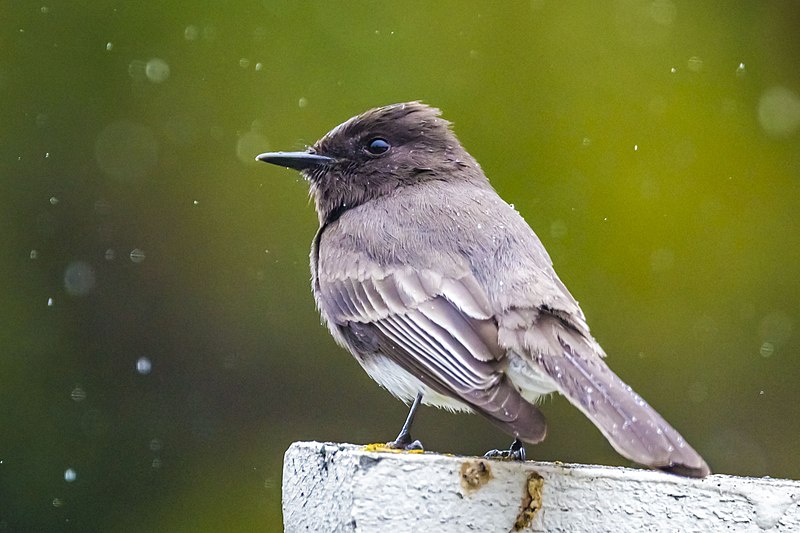
The black phoebe is a beautiful passerine bird belonging to the tyrant flycatcher family. It breeds from southwest Oregon and California south through Central and South America, where it can be found year-round.
However, its northern populations tend to migrate seasonally in some areas. Six subspecies of this species have been identified so far: two are occasional visitors while the others are more common residents in their range.
The adult has mainly dark grey upperparts with a white belly; juveniles may show brownish tones instead of grey ones on their back.
Its main diet consists of insects which it catches by hovering over water or flying out after them from perches near rivers or streams – hence why they’re often seen around these places.
Scientific classification:
| Kingdom | Animalia |
| Phylum | Chordata |
| Class | Aves |
| Order | Passeriformes |
| Family | Tyrannidae |
| Genus | Sayornis |
| Species | S. nigricans |
Also Featured In: Flycatchers Species, Birds Live Near San Diego
8. Cassin’s Kingbird

Cassin’s kingbird is a large tyrant flycatcher native to western North America. It was named in honor of the American ornithologist John Cassin and first described by English naturalist William John Swainson back in 1826, with its type locality being Temascaltepec, Mexico.
These birds are generally dark gray or brown on top with lighter underparts that have yellowish tints around the throat and belly region.
They also sport long tails which they often spread wide while perched atop branches or wires looking out for prey like insects as well as small reptiles or amphibians.
Their calls can be quite loud but usually consist of two syllables: “whee-er” or sometimes “whit-chew”.
In addition to their diet, Cassin’s Kingbirds defend territories against other species including hawks and crows during breeding season when they raise their young before migrating southward again come wintertime.
Scientific classification:
| Kingdom | Animalia |
| Phylum | Chordata |
| Class | Aves |
| Order | Passeriformes |
| Family | Tyrannidae |
| Genus | Tyrannus |
| Species | T. vociferans |
Also Featured In: Most Common Birds in Michoacán, Common Birds of Mexico City
9. Costa’s Hummingbird

Costa’s hummingbird is a species of the Trochilidae family. It inhabits arid regions in both the southwest United States and northwest Mexico, migrating to western Mexico for wintering purposes.
This bird was named by French ornithologist Jules Bourcier in 1839 after honoring François Coste, who had sent specimens to him from North America.
Costa’s hummingbirds are small birds averaging 3-3.5 inches (7–9cm) long with typically green feathers on their back and tail while underparts are usually greyish or sometimes white with purple highlights around the throat area giving them an iridescent appearance when light hits it the right angle.
Males also have red patches on their forehead which they use as part of courtship display behavior along with singing distinctive “wheep” sounds during mating season.
Scientific classification:
| Kingdom | Animalia |
| Phylum | Chordata |
| Class | Aves |
| Order | Apodiformes |
| Family | Trochilidae |
| Genus | Calypte |
| Species | C. costae |
Also Featured In: Hummingbirds Species, Phoenix Birds You Should Know
10. Cliff Swallow

The Cliff swallow, or American cliff swallow (Petrochelidon pyrrhonota) is a species of passerine bird belonging to the family Hirundinidae. They are commonly found in North and South America.
These birds have an unmistakable appearance with their bright orange foreheads and flame-colored backs that make them stand out from other swallows.
Cliff swallows form large colonies when nesting on cliffsides which makes them very social creatures; they often feed together while flying around fields or rivers looking for insects to eat.
In addition, they use mud pellets to build cup-shaped nests under bridges and eaves of buildings near water sources such as lakes, rivers, and marshes – usually close to human dwellings.
Overall, these fascinating birds are both beautiful to look at and practical too — providing insect pest control services through feeding on flies and mosquitoes in return for humans’ protection – what could be better?
Scientific classification:
| Kingdom | Animalia |
| Phylum | Chordata |
| Class | Aves |
| Order | Passeriformes |
| Family | Hirundinidae |
| Genus | Petrochelidon |
| Species | P. pyrrhonota |
Also Featured In: Swallows Species, Blue Birds You’ll Found around Us
Conclusion
Orange County, California, offers an enticing avian spectacle that beckons birdwatchers and nature enthusiasts alike.
The list of “10 Orange County Birds You Need to See Before You Die” showcases the region’s remarkable diversity, from the majestic Bald Eagle to the charismatic Burrowing Owl.
Exploring the various habitats within Orange County, from coastal areas to inland preserves, provides ample opportunities to spot these captivating species.
Preserving and protecting these environments is not only essential for the birds but also for the community’s appreciation of nature.
Witnessing these ten birds is a testament to the region’s rich biodiversity and the importance of conservation efforts.